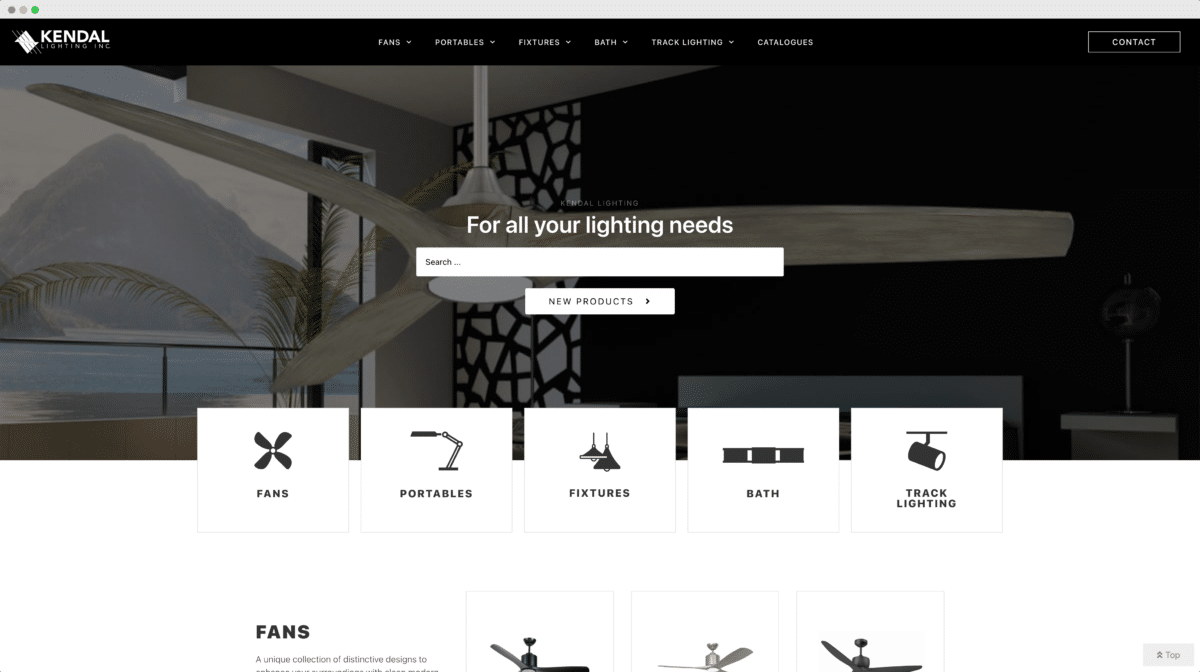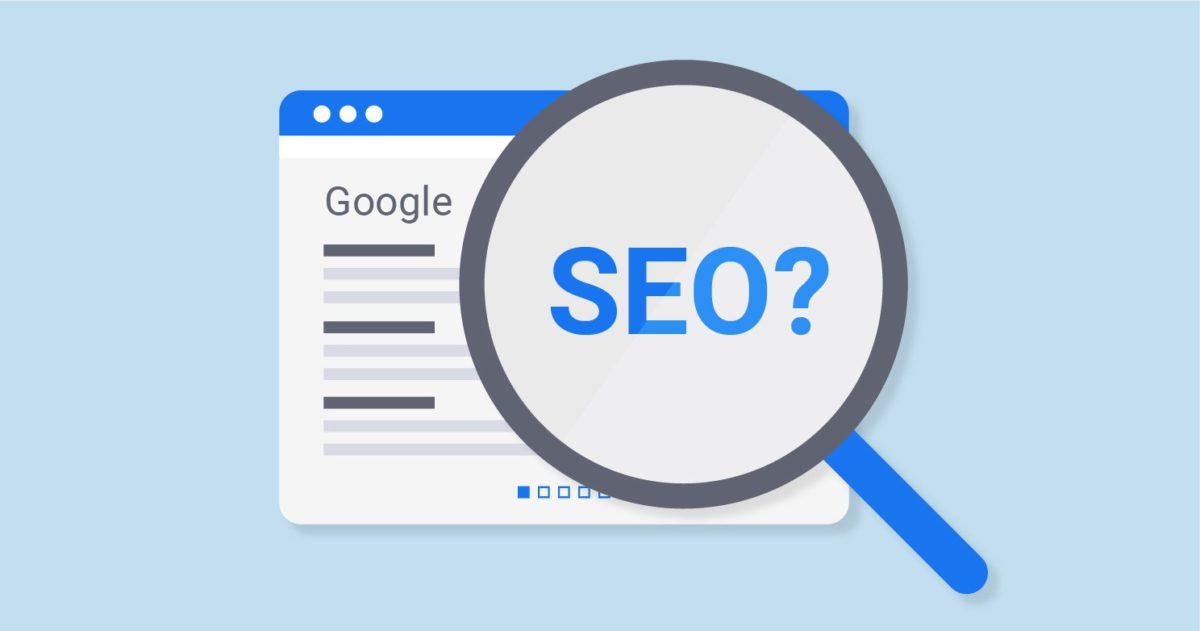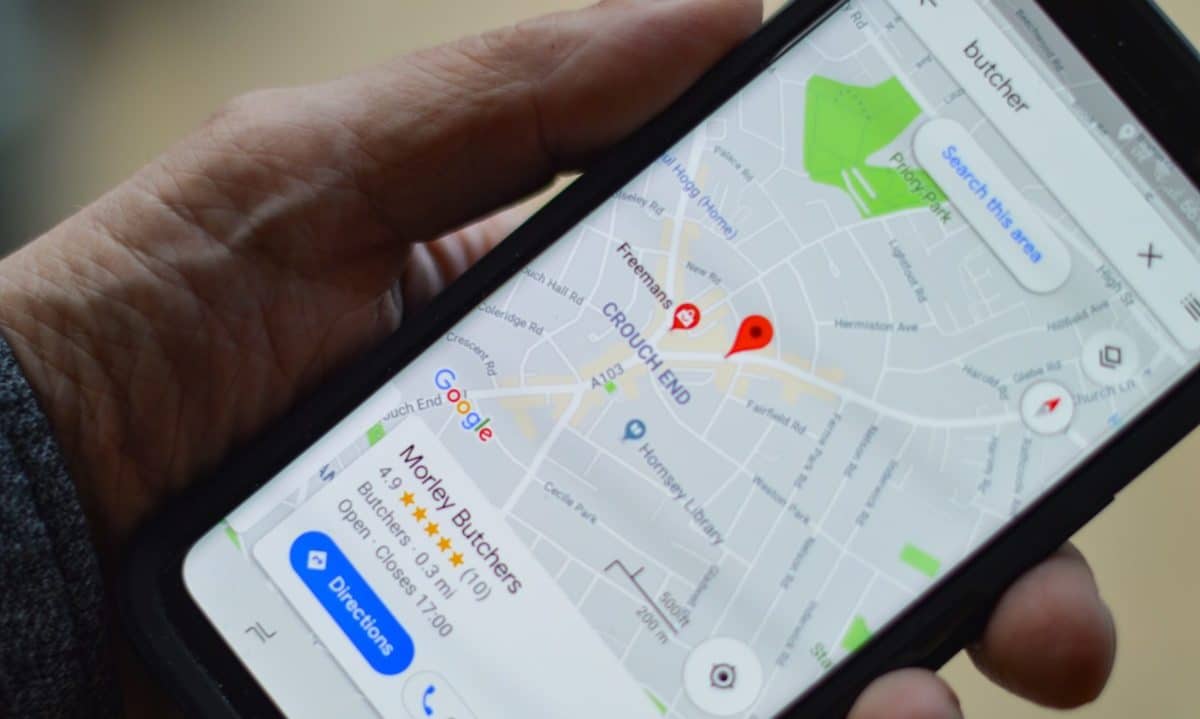In today’s digital age, businesses recognize websites’ critical role in reaching and engaging potential customers. As an experienced website design company with years of expertise and proven results helping local Edmonton and international clients, we have mastered “how to increase sales through web design” and understand its importance.
Our success comes from creating appealing, easy-to-navigate, high-performing websites for numerous clients. Our extensive knowledge and track record position us as industry experts who can help you drive sales and boost your online presence.
A well-crafted website can significantly impact online sales by converting visitors into customers. Through our vast experience in the field, we’ve honed the art of designing websites that capture users’ attention and inspire trust and loyalty.
In this article, we’ll share our expert insights and best practices to help you elevate your web design and maximize your online sales potential. By following our advice, you can trust that your website is in the hands of true professionals dedicated to helping your business succeed in the competitive online landscape.
How web design can help you get more sales

A well-designed website represents your brand and value proposition and helps achieve your sales goals by improving the user experience, attracting and retaining customers, and boosting conversions. In this guide, we will explore various strategies to enhance the visual appeal of your web design and increase sales.
Using high-quality visuals to attract customers
High-quality visuals such as images, videos, and graphics play a significant role in attracting customers and keeping them engaged. Use high-quality images, professional photos of your products or services, and captivating graphics to enhance your website’s overall look and improve user experience.
- Images: Choose high-resolution images that showcase your products or services in the best light. Use a mix of product shots, lifestyle images, and infographics to keep visitors interested.
- Videos: Incorporate short, engaging videos to demonstrate your products or services, share customer testimonials, or provide valuable information to your audience.
- Graphics: Utilize custom graphics, icons, and illustrations to emphasize key points, break up the text, and create visual interest.
Designing simple navigation for ease of use
A simple and intuitive navigation structure on a desktop site helps users find what they’re looking for quickly and easily. Ensure organized navigation on your menu is well-organized and prominently displayed, with clear labels for each section.
Careful use of white space to create a clean, uncluttered look
White space (the empty areas between elements) gives the responsive design on your website a clean, uncluttered appearance, for example, which can help users focus on the content and make it more digestible. See the example below of this Edmonton company website where we used white space strategically to focus users attention.
- Balance white space and content: While white space is essential, too much can make your website appear empty. Find the right balance between white space and content to create an engaging, professional design.
- Break up text with white space: Use white space to separate sections, paragraphs, and elements on your page, making it easier for users to read and process the information.
- Create a visual hierarchy: Use white space to emphasize essential elements and guide users’ attention through your website.

Publishing reviews to build trust and credibility
Displaying recommendations, referrals, positive experiences, and endorsements from satisfied and loyal customers, industry experts, or other authoritative sources can help build trust and credibility with your audience.
- Testimonials: Add a dedicated section on your website to showcase customer testimonials, complete with their name, photo, and a brief quote about their experience with your product or service.
- Reviews: If you have positive reviews on third-party platforms like Google, Yelp, or Trustpilot, consider showcasing them on your website.
- Endorsements: Display logos or quotes from industry experts, influencers, or media outlets recommending or featuring your product or service.
Implementing a short sales cycle to reduce barriers
A short sales cycle can help minimize friction and make it easier for customers to make purchase decisions and complete a purchase. Identify and eliminate any unnecessary steps in the buying process to provide a seamless experience.
- Simplify the checkout process: Reduce the steps and forms required for customers to complete a purchase. Offer guest checkout options and streamline registration processes.
- Offer multiple payment options: Provide various payment options, including credit cards, PayPal, and other popular payment methods, to accommodate different customer preferences.
- Provide clear pricing and shipping information: Be transparent about pricing, shipping costs, and delivery times to avoid surprises that might deter potential customers.
Making call-to-action (CTA) and contact forms stand out
Effective CTAs and contact forms are essential for converting visitors into leads and into new customers. Ensure that these elements are prominent, clear, and compelling.
- Use contrasting colors: Make your CTAs and contact forms stand out by highlighting these elements.
- Be clear and concise: Use short, actionable phrases for your CTAs, such as “Buy Now,” “Sign Up,” or “Get Started.” Keep contact form fields to a minimum, requesting only the essential information.
- Position CTAs strategically: Place CTAs in prominent locations throughout your website, such as above the fold, at the end of blog posts, and within product pages.
Showing loyalty to customers through trust-building
Building trust with your customers is crucial for long-term success. Incorporate trust-building elements into your web design to foster customer loyalty.
- Security badges: Display security badges from trusted providers (e.g., SSL certificates, trust seals) to assure customers that their information is secure.
- Clear return and refund policies: Prominently publish them on your website and make them easy to understand.
- Offer customer support: Provide multiple channels for customer support, such as live chat, email, and phone, to show your commitment to customer satisfaction.
Personalization
Personalizing your website content based on user behavior, preferences, or demographic information can lead to a more engaging and relevant experience for more users and website visitors, ultimately increasing conversions. Another great way to personalize content is using location-based content. We often do this for our Edmonton-based clients that have an international audience. We can change the text that shows on their site based on the users geographical location.
- Product recommendations: Display personalized product recommendations based on a user’s browsing history, previous purchases, or other related products.
- Dynamic content: Adjust content, offers, or promotions based on user preferences, location, or other demographic factors.
- Retargeting: Utilize retargeting to display relevant ads to users who have visited your website but did not complete a purchase, encouraging them to return and complete the transaction.
Website Performance & Optimization

Site loading speed for a better user experience
A fast-loading website is crucial for your website traffic, providing a positive user experience and retaining visitors. Slow load speeds and times can lead to higher bounce rates and lower conversions.
- Optimize images: Compress and resize images to reduce file sizes without sacrificing quality.
- Minify code: Minify CSS, JavaScript, and HTML files to eliminate unnecessary characters and reduce file sizes.
- Use a Content Delivery Network (CDN): Pairing a CDN with your website hosting can help speed up your website by serving content from servers closer to your users.
Best practices for optimizing site performance
Several best practices can help optimize your website’s performance, ensuring a smooth and enjoyable user experience.
- Regularly update your website: Keep your website software, plugins, and themes up-to-date to maintain optimal performance and security.
- Use browser caching: Implement browser caching to store static files on a user’s device, reducing the need to download them again on subsequent visits.
- Optimize database performance: Regularly clean and optimize your website’s database to identify trends and areas for improvement.
- Measure the impact of changes: Monitor the effects of design changes or marketing campaigns on your website’s performance and sales to determine their success.
How to set up and use website analytics tools
Analytics tools are essential for tracking your website traffic’s performance and making data-driven decisions.
- Choose an analytics tool: Popular options include Google Analytics, Adobe Analytics, and Matomo. Select a tool that best suits your needs and budget.
- Set up tracking: Follow the instructions provided by your chosen analytics tool to set up tracking on your website, usually by adding a tracking code snippet to your site’s code.
- Monitor and analyze data: Regularly review your website’s analytics data to gain insights into user behavior, identify areas for improvement, and measure the impact of changes or campaigns.
Best practices for using analytics to optimize your website
To get the most out of your analytics data, follow these best practices to optimize your website traffic’s performance.
- Set measurable goals: Define specific, measurable goals for your website, such as increasing conversion rates, reducing bounce rates, or improving average time on site.
- Segment your data: Break down your analytics data by user segments, such as demographics, device types, or traffic sources, to gain more granular insights.
- Track and analyze KPIs: Monitor key performance indicators related to your goals and use the insights gained to make informed decisions about your website’s design and performance.
Social Proof and Testimonials

Using social proof to build trust and Credibility
Social proof, such as customer testimonials, reviews, and endorsements from site users, can help build trust and credibility with your audience, leading to increased sales.
- Display customer testimonials: Showcase positive customer testimonials on your website, ideally with their name, photo, and a brief quote about their experience.
- Highlight ratings and reviews: Feature ratings and reviews from third-party platforms like Google, Yelp, or Trustpilot on your website provide unbiased social proof.
- Show off endorsements: Display endorsements from industry experts, influencers, or media outlets recommending or featuring your product or service.
Incorporate customer testimonials into your design.
Incorporating customer testimonials into your web design can help you boost sales, credibility, and trust with paying customers, leading to higher conversion rates.
- Create a dedicated testimonial page: Develop a page on your website specifically for showcasing customer testimonials. Include a mix of text, images, and videos for added impact.
- Add testimonials to key pages: Place testimonials strategically throughout your website, such as on product pages, landing pages, or the homepage.
- Use a testimonial slider or carousel: Implement a testimonial slider or carousel to showcase multiple testimonials in a compact, engaging format.
Leveraging social proof to increase sales
Maximize the impact of social proof on your website with these best practices.
- Keep testimonials authentic: Ensure all testimonials are genuine and reflect your customers’ experiences. Avoid using generic or overly salesy quotes.
- Regularly update testimonials: Refresh them with new, up-to-date feedback to maintain relevance and effectiveness.
- Combine different types of social proof: Use a mix of testimonials, reviews, ratings, and endorsements to provide a well-rounded, convincing social proof portfolio.
A/B Testing and Heatmapping
A/B testing to optimize designs and increase sales
A/B testing involves comparing two different versions of a web, landing page, website design element, front page, or marketing campaign to determine which performs better in terms of your goals, such as conversions or sales.
- Identify areas for testing: Determine which elements of your website could benefit from A/B testing, such as headlines, CTAs, or images.
- Create variations: Develop different versions of the element you want to test, making a single, significant change for each variation.
- Run the test: Use an A/B testing tool, like Google Optimize, VWO, or Optimizely, to run the test, evenly splitting traffic between the variations.
- Analyze the results: Review the data collected during the test to determine which variation performed better in terms of your goals, such as conversion rate or sales.
Heatmapping to track user behavior and improve the design
Heatmaps visually represent user behavior on your website, such as clicks, scrolls, and mouse movements, allowing you to identify areas for improvement in your overall web design.
- Choose a heat mapping tool: Select a heat mapping tool like Hotjar, Crazy Egg, or Mouseflow to collect and visualize user behavior data on your website.
- Identify areas of interest: Use the heatmap data to pinpoint areas of high user engagement and areas where users may be experiencing confusion or difficulty.
- Make data-driven design changes: Apply insights from your heatmaps to make targeted improvements to your website’s design, such as rearranging content, simplifying navigation, or adjusting CTAs.
SEO and Digital Marketing

The role of SEO in driving sales
Search engine optimization (SEO) helps improve your website’s visibility in search engine results, driving organic traffic and increasing the likelihood of sales.
- Keyword research: Identify relevant keywords related to your products or services that users are likely to search for and incorporate them into your website’s content.
- On-page optimization: Optimize on-page elements, such as title tags, meta descriptions, and header tags, to improve search engine rankings and click-through rates.
- Quality content: Publish valuable, informative, and engaging content that addresses user needs and aligns with your target keywords.
Best practices for optimizing for SEO
Follow these SEO best practices to improve your website’s search engine rankings and drive more organic traffic.
- Optimize site structure: Organize your website’s content into a clear hierarchy with descriptive URLs, making it easier for search engines and users to navigate your site.
- Implement schema markup: Use schema markup to provide search engines with additional information about your content, potentially leading to enhanced search results listings.
- Build high-quality backlinks: Earn backlinks from reputable, authoritative websites to boost your website’s credibility and improve search engine rankings.
How digital marketing can increase sales
To increase brand awareness and sales, digital marketing encompasses various strategies and tactics for companies, including social media marketing, email marketing, and pay-per-click advertising.
- Social media marketing: Use social media platforms like Facebook, Instagram, and Twitter to connect with your target audience, share engaging content, and promote your products or services.
- Email marketing: Implement targeted email campaigns to nurture leads, promote special offers, and keep customers engaged with your brand.
- Pay-per-click (PPC) advertising: Utilize PPC platforms like Google Ads or Facebook Ads to target specific keywords or audiences and drive traffic to your website or landing pages.
The Future of Web Design and Sales

Emerging trends and technologies in web design
Stay ahead of the web designer curve by keeping an eye on emerging website design, trends in good web design, and technologies that could impact sales in the future.
- Artificial intelligence (AI) and chatbots: AI-powered chatbots can provide personalized customer support, helping to guide users through the sales process and address their questions or concerns.
- Voice search optimization: As voice search becomes more prevalent, optimizing your website for voice search queries can help improve visibility and drive more traffic.
- Augmented reality (AR) and virtual reality (VR): Incorporate AR and VR experiences into your website to provide immersive, engaging experiences for users, showcasing your products or services in new and innovative ways.
How these trends may impact sales in the future
Adopting emerging business trends and technologies can help your business stay competitive and drive more sales in the future.
- Improved customer experience: Embracing innovations like AI chatbots, voice search, or AR and VR can enhance the customer experience, leading to higher satisfaction and increased sales.
- Staying ahead of the competition: By adopting new technologies and trends early, you can differentiate yourself from competitors and position your brand as an industry leader.
- Personalization and targeting: As technology advances, it becomes easier to personalize your website and marketing efforts, allowing you to target specific customer segments more effectively, ultimately increasing sales.
Recommendations for staying ahead of the curve
Consider the following recommendations to improve sales and stay ahead in the ever-evolving digital world of web design and sales.
- Monitor industry news and trends: Stay informed about the latest developments in web design, user experience, and digital marketing by regularly reading industry blogs, attending conferences, and participating in online forums.
- Experiment with new technologies: Be open to testing and implementing new technologies and design trends while carefully measuring their impact on your website’s performance and sales.
- Continuously iterate and optimize: Regularly review your website’s analytics data, gather user feedback, and make data-driven improvements to your web design and marketing strategies to maximize sales.
Recap of key points
In this article, we have shared 37 valuable tips on how to increase sales through web design. By focusing on creating visually appealing and user-friendly websites, optimizing site performance, implementing conversion rate optimization strategies, leveraging social proof, and staying ahead of emerging trends and technologies, you can significantly boost your online sales and achieve your business goals.
Final thoughts
Increasing sales through web design is an ongoing process that demands continuous improvement and optimization. Implementing the strategies and best practices outlined in this article will set your website on the right path to success.
However, managing all these aspects can be challenging, especially if you’re not an expert in web design, SEO, and digital marketing. Our website design, search engine optimization, and digital marketing services are here to help you achieve success in all the areas covered in this article.
By partnering with us, you’ll gain access to our team of experts who are dedicated to helping you maximize your online sales and reach your full potential. Let us take care of your website’s design and performance, while you focus on growing your business.



